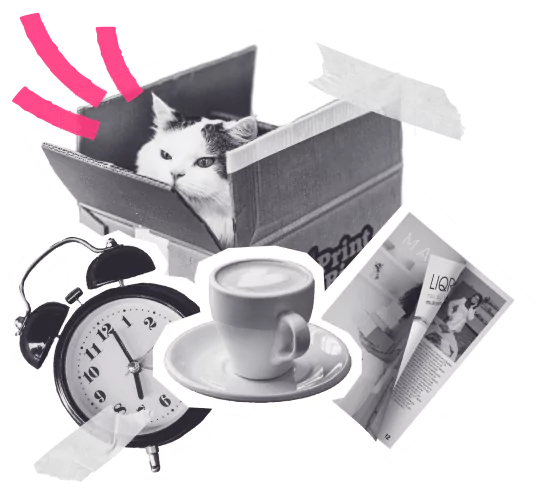How do I print sustainable?
Printing as sustainable as possible is becoming more and more popular, and we understand that! Sustainable printing is better for the environment and is not more expensive than standard printing. That is why we have various options for printing your job as ecologically as possible. We also have standard elements in our production process for a production that is less harmful to the environment. Here you can read everything about ecological printing at Print&Bind.
Ecological paper types
Paper is of course very important when printing a job. That is why we pay a lot of attention to our paper types when choosing them. We think it is very important that the environmental impact of these paper types is as small as possible. That is why we have paper types that have special quality marks. Our paper types have one or more of these quality marks such as: FSC, ECF, PEFC, EU Ecolabel or an ISO quality mark.
Our most ecological papers are made from 100% agricultural waste from Paperwise. We use this Paperwise paper for the options 80 grams and Eco fiber paper. No trees are needed for this paper! Moreover, PaperWise's production process is CO2 neutral. Here you can find more about our Paperwise paper. In addition to our Paperwise paper, Kraft Paper is also one of our most ecological paper types. This firm paper (almost cardboard) is made entirely from recycled paper. This paper is very interesting as a cover for books or cards.
What do the quality marks of our paper types mean?
All quality marks mentioned in the above section relate to the environment. These labels stand for the preservation and regulation of the environment and forests. In this way we try to ensure that the impact on the environment is as low as possible. What do the quality marks mean?
FSC quality mark: The abbreviation FSC stands for Forest Stewardship Council. The international, independent FSC label ensures that raw materials for wood and paper products come from responsibly managed forests, with full attention to the people who depend on the forest.
ECF quality mark: This stands for Elementary Chlorine Free. Paper is sometimes bleached to prevent yellowing and to give the paper a certain whiteness. With ECF certified paper, no chlorine is used to bleach the paper, but a combination of chlorine and oxygen. This connection is much less harmful to the environment.
European Ecolabel: This label indicates that a product, in this case paper, has been produced in an environmentally conscious manner. To be able to use this quality mark, a company must meet strict criteria, such as emissions to water and air and energy consumption. In addition, no chlorine gas may be used as to bleach the paper.
PEFC quality mark: PEFC is an acronym for Program for the Endorsement of Forest Certification. This international quality mark guarantees that wood and paper products come from a sustainably managed forest and that this forest is preserved.
ISO certified: Several ISO certificates are possible. For example, many of our paper types have an ISO 14001 and ISO 50001 certificate. ISO 14001 certified means that a contribution has been made to control and reduce environmental risks. ISO 50001 certified relates to the improvement of energy use and (often) the use of green electricity.
The use of these quality marks guarantees that the environment is considered in various areas during production and that it is handled correctly. We certainly take these quality marks into account when choosing and using the paper types!
Green energy and bulk production
We try to think about the environment in different ways with our other printers. Because our printers run all day to be able to produce all orders on time, we use green electricity. This means that our electricity is only sustainably generated by water or wind power. All toners and waste bins that our printers use are also recycled. Parts that cannot be reused are recycled into high-quality materials. A large part of our printers are machines from Ricoh. This cycle is repeated as much as possible in order to use as little new material as possible. In this way we try to burden the environment as little as possible before production. With these small additions we try to make our "footprint" as small as possible. Here you can find our green electricity certificate.
To keep our paper consumption as low as possible, all our orders are produced in bulk. We try to fill the paper with the print jobs as well as possible. In this way, the paper is used optimally and as little as possible falls off the paper. Through this method of production, we not only use as little paper as possible, but we also keep costs for our customers lower! All paper materials that cannot be used can be recycled up to 7 times into raw material for, among other things, new paper.














